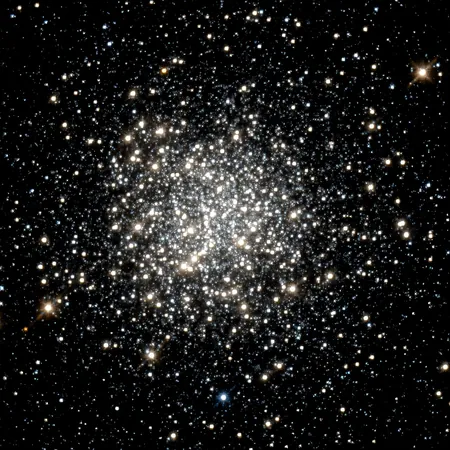
Astronomers Uncover Secrets of Ancient Globular Cluster NGC 1754
2025-05-27
Author: Amelia
NGC 1754: A Stellar Time Capsule
Astronomers utilizing the Hubble Space Telescope (HST) have turned their gaze toward the ancient globular cluster NGC 1754, part of a groundbreaking study focusing on the massive clusters within the Large Magellanic Cloud (LMC). This research, released on May 15, dives deep into the complex properties of this stellar powerhouse.
What Makes Globular Clusters So Fascinating?
Globular clusters, collections of tens of thousands to millions of stars, serve as natural laboratories for understanding star and galaxy evolution. Formed simultaneously in similar environments, each cluster provides insights into the cosmos’ history.
Discovering NGC 1754
First spotted in 1836, NGC 1754 lies an impressive 170,000 light years from Earth. With a core radius of about 2.87 light years and a mass around 100,000 solar masses, this old globular cluster has a metallicity measured at -1.45.
High-Tech Observations and Findings
Recently, HST's Wide Field Camera 3 (WFC3) and Advanced Camera for Surveys (ACS) captured detailed images of NGC 1754, led by Camilla Giusti and her team from the University of Bologna. They collected 16 high-resolution images using the UVIS1 channel and supplemented this data with 13 optical images taken from a field approximately 5 minutes away from the cluster's center.
Revealing Age and Composition
The HST team determined that NGC 1754 has a core radius of about 2.74 light years and an impressive chronological age of 12.8 billion years, affirming its status as a compact and ancient globular cluster. Its confirmed metallicity of -1.45, along with a reddening measurement of 0.1, aligns with earlier studies.
Cosmic Connections and Evolution
This research suggests that globular cluster formation likely began at the same cosmic time for both the LMC and our Milky Way, indicating that the process isn’t strictly dependent on environmental factors. Additionally, NGC 1754 displays signs of an advanced dynamical age, hinting at a possible impending core collapse.
A Tale of Dynamical Ages
Experts note that differences in core radius among older LMC clusters arise from varying dynamical ages. Clusters that are more compact appear to be more dynamically evolved compared to their less dense counterparts.
This remarkable study not only sheds light on NGC 1754 but also enriches our understanding of the complex evolutionary paths of globular clusters across the universe.









 Brasil (PT)
Brasil (PT)
 Canada (EN)
Canada (EN)
 Chile (ES)
Chile (ES)
 Česko (CS)
Česko (CS)
 대한민국 (KO)
대한민국 (KO)
 España (ES)
España (ES)
 France (FR)
France (FR)
 Hong Kong (EN)
Hong Kong (EN)
 Italia (IT)
Italia (IT)
 日本 (JA)
日本 (JA)
 Magyarország (HU)
Magyarország (HU)
 Norge (NO)
Norge (NO)
 Polska (PL)
Polska (PL)
 Schweiz (DE)
Schweiz (DE)
 Singapore (EN)
Singapore (EN)
 Sverige (SV)
Sverige (SV)
 Suomi (FI)
Suomi (FI)
 Türkiye (TR)
Türkiye (TR)
 الإمارات العربية المتحدة (AR)
الإمارات العربية المتحدة (AR)